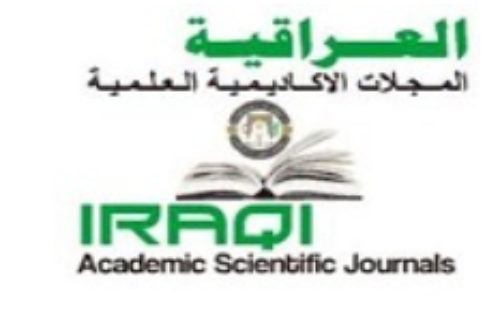Physical properties of dust resulting from cutting some building materials in Baghdad city
DOI:
https://doi.org/10.32792/utq/utjsci/v12i1.1283Keywords:
Particle matter, dust, air quality, Iraqi tile and marble , air pollution , ecology , physical properties , PM 2.5 , PM 10.Abstract
From a toxicological perspective, particles with diameters less than 10 micrometers are referred to as inhalable particles. These particles possess the capability to penetrate deeply into the respiratory system, resulting in severe health consequences such as lung and respiratory diseases. Exposure to suspended particles has been associated with mortality, heart conditions, and respiratory ailments, particularly among children and the elderly. the study extended over the period of work from September 2022 to February 2023. two construction sites were conducted, each of the construction sites is located in Baghdad. According to the suggested national ambient air quality standards in Iraq (Profile on Environmental and Social Considerations in Iraq 2011) all the average values for PM2.5 exceed the World Health Organization (15μg/m3) and the Iraqi limit standard (35 μg/m3). PM10 also exceeds the standard limits of WHO (45 μg/m3) and the Iraqi limits (150 μg/m3) The study on Iraqi tile and marble dust particle diameters as physical properties provides valuable insights into the characteristics of these materials. By analyzing the particle sizes, researchers gain a deeper understanding of their behavior, dispersion, and potential applications. The investigation involves some measurements and statistical analysis to establish correlations between particle dimensions and its health impact on tile setters.
Received:2024-07-14
Revised: 2024-08-15
Accepted:2024-08-26
References
[1] R. Albarakat and V. Lakshmi, "Monitoring dust storms in Iraq using satellite data," Sensors, vol. 19, p. 3687, 2019.
[2] B. Bessagnet, N. Allemand, J.-P. Putaud, F. Couvidat, J.-M. André, D. Simpson, et al., "Emissions of carbonaceous particulate matter and ultrafine particles from vehicles—a scientific review in a cross-cutting context of air pollution and climate change," Applied Sciences, vol. 12, p. 3623, 2022.
[3] C. Z. Li, Y. Zhao, and X. Xu, "Investigation of dust exposure and control practices in the construction industry: Implications for cleaner production," Journal of Cleaner Production, vol. 227, pp. 810-824, 2019.
[4] M. Lestari, P. Fujianti, N. Novrikasari, and R. F. Nandini, "Dust Exposure and Lung Function Disorders," Respiratory Science, vol. 3, pp. 218-230, 2023.
[5] Q. Luo, L. Huang, X. Xue, Z. Chen, F. Zhou, L. Wei, et al., "Occupational health risk assessment based on dust exposure during earthwork construction," Journal of Building Engineering, vol. 44, p. 103186, 2021.
[6] M. Krzemińska-Flowers, H. Bem, and H. Górecka, "Trace Metals Concentration in Size-Fractioned Urban Air Particulate Matter in Łódź, Poland. I. Seasonal and Site Fluctuations," Polish Journal of Environmental Studies, vol. 15, 2006.
[7] R. Maynard, "Environmental toxicants: human exposures and their health effects," ed: BMJ Publishing Group Ltd, 2000.
[8] S. K. Prajapati, "Ecological effect of airborne particulate matter on plants," 2012.
[9] L. Jimoda, "Effects of particulate matter on human health, the ecosystem, climate and materials: a review," Facta universitatis-series: Working and Living Environmental Protection, vol. 9, pp. 27-44, 2012.
[10] G. Bagheri, O. Schlenczek, L. Turco, B. Thiede, K. Stieger, J.-M. Kosub, et al., "Exhaled particles from nanometre to millimetre and their origin in the human respiratory tract," medRxiv, p. 2021.10. 01.21264333, 2021.
[11] Z. M. Hatem, M. M. Alsamarraie, A. Y. Flaih, and A. M. Oda, "Barriers to the adoption of industrialized building system in Iraqi construction industry," Zanco Journal of Pure and Applied Sciences, vol. 33, pp. 30-42, 2021.
[12] H. Al-Lami, N. N. Al-Mayyahi, Q. Al-Yasiri, R. Ali, and A. Alshara, "Performance enhancement of photovoltaic module using finned phase change material panel: An experimental study under Iraq hot climate conditions," Energy Sources, Part A: Recovery, Utilization, and Environmental Effects, vol. 44, pp. 6886-6897, 2022.
[13] M. M. Mohsin, T. Beach, and A. Kwan, "Consensus-based urban sustainability framework for Iraqi cities: A case study in Baghdad," Heliyon, vol. 6, 2020.
[14] T. Schneider, D. H. Brouwer, I. K. Koponen, K. A. Jensen, W. Fransman, V. Duuren-Stuurman, et al., "Conceptual model for assessment of inhalation exposure to manufactured nanoparticles," Journal of exposure science & environmental epidemiology, vol. 21, pp. 450-463, 2011.
[15] S. Yang, J. Liu, X. Bi, Y. Ning, S. Qiao, Q. Yu, et al., "Risks related to heavy metal pollution in urban construction dust fall of fast-developing Chinese cities," Ecotoxicology and Environmental Safety, vol. 197, p. 110628, 2020.
[16] T. Yang, R. Chen, X. Gu, J. Xu, L. Yang, J. Zhao, et al., "Association of fine particulate matter air pollution and its constituents with lung function: The China Pulmonary Health study," Environment international, vol. 156, p. 106707, 2021.
[17] S. Hammoudeh, W. Gadelhaq, and I. A. Janahi, "Asthma Among Arab Nations: An Overview," Handbook of Healthcare in the Arab World, pp. 2827-2854, 2021.
[18] G. Oberdörster, J. Ferin, and B. E. Lehnert, "Correlation between particle size, in vivo particle persistence, and lung injury," Environmental health perspectives, vol. 102, pp. 173-179, 1994.
[19] S. N. M. Tarmizi, A. Asmat, and S. M. Sumari, "Temporal and spatial PM10 concentration distribution using an inverse distance weighted method in Klang Valley, Malaysia," in IOP conference series: earth and environmental science, 2014, p. 012048.
[20] M. E. Al-Defiery, S. J. Hadi, and A. A. R. Hassan, "Monitoring of PM10 concentrations on Babylon province, Iraq," Mesopotamia Environmental Journal (mesop. environ. j) ISSN: 2410-2598, vol. 2, pp. 47-56, 2016.
[21] S. H. Ali, M. A. Najemaden, and R. T. Ahmed, "Using GIS techniques for mapping the pollution of particulate materials in Kirkuk," Sustain Resour Manag J, vol. 3, pp. 58-66, 2018.
[22] A. J. Al-Yasiri, "Iraq's Post-2003 Environmental Pollution: Issues And Solutions," Akkad Journal Of Contemporary Economic Studies, vol. 1, pp. 1-16, 2021.
[23] P. Dimopoulos Eggenschwiler, D. Schreiber, V. Papetti, S. Gramstat, and D. Lugovyy, "Electron Microscopic Characterization of the Brake Assembly Components (Disc and Pads) from Passenger Vehicles," Atmosphere, vol. 13, p. 523, 2022.
[24] V. V. Tran, D. Park, and Y.-C. Lee, "Indoor air pollution, related human diseases, and recent trends in the control and improvement of indoor air quality," International journal of environmental research and public health, vol. 17, p. 2927, 2020.
[25] H. Sadeghi, "The effect of indoor air quality on health and performance of labors in joinery factories," The British University in Dubai, 2020.
[26] C. Ramkissoon, S. Gaskin, L. Thredgold, T. Hall, S. Rowett, and R. Gun, "Characterisation of dust emissions from machined engineered stones to understand the hazard for accelerated silicosis," Scientific Reports, vol. 12, p. 4351, 2022.
[27] H. L. Karlsson, P. Cronholm, J. Gustafsson, and L. Moller, "Copper oxide nanoparticles are highly toxic: a comparison between metal oxide nanoparticles and carbon nanotubes," Chemical research in toxicology, vol. 21, pp. 1726-1732, 2008.
[28] F. Usman, B. Zeb, K. Alam, Z. Huang, A. Shah, I. Ahmad, et al., "In-depth analysis of physicochemical properties of particulate matter (PM10, PM2. 5 and PM1) and its characterization through FTIR, XRD and SEM–EDX Techniques in the Foothills of the Hindu Kush Region of Northern Pakistan," Atmosphere, vol. 13, p. 124, 2022.
[29] D. A. Aloraini, M. Elsafi, A. H. Almuqrin, S. Yasmin, and M. Sayyed, "Synergistic effect in ionizing radiation shielding with recent tile composites blended with marble dust and BaO micro/nanoparticles," Crystals, vol. 13, p. 1057, 2023.
[30] N. Ali, I. Adil, A. Magsi, and E. Asif, "Particle size, morphology and characterization of indoor and outdoor airborne particulate matter for toxic metals in Karachi," International Journal of Environmental Science and Technology, vol. 17, pp. 3969-3982, 2020.
[31] G. M. Ingo, C. Riccucci, G. Pisani, M. Pascucci, D. D'Ercole, E. Guerriero, et al., "The vehicle braking systems as main source of inhalable airborne magnetite particles in trafficked areas," Environment International, vol. 158, p. 106991, 2022.
Downloads
Published
License
Copyright (c) 2025 University of Thi-Qar Journal of Science

This work is licensed under a Creative Commons Attribution 4.0 International License.












